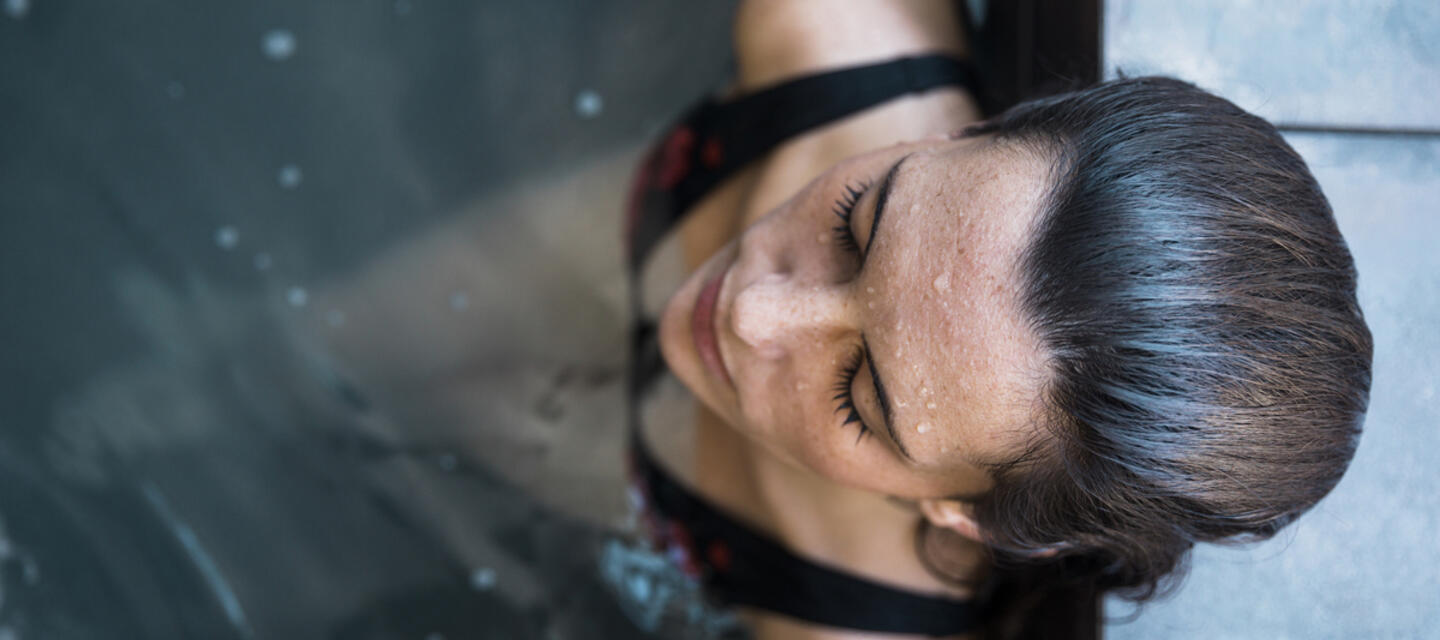Cold water therapy has been practised for centuries, but in recent years, it has surged in popularity as a powerful wellness tool. From athletes to everyday wellness enthusiasts, more and more people are taking the plunge—literally—into icy waters to reap the benefits of this natural therapy.
But what exactly is cold water therapy, and how can it improve your physical and mental wellbeing?
What Is Cold Water Therapy?
At its core, cold water therapy involves exposing the body to cold temperatures, usually by immersing yourself in water that’s between 10-15°C. This can be done through a variety of methods, including cold plunges, ice baths, or even taking a dip in the ocean. While the idea of immersing yourself in freezing water may seem intimidating, the health benefits are well-documented and worth considering.
Cold water therapy is much more than just a trendy recovery tool. It’s a holistic wellness practice that can help with recovery, inflammation reduction, mental clarity, and even improved mood. Whether you’re looking to recover from exercise, manage chronic pain, or simply feel invigorated, cold-water therapy is something worth exploring.

The Science Behind Cold Water Therapy
When your body is exposed to cold water, it triggers a range of physiological responses. The cold causes your blood vessels to constrict, which helps reduce swelling and inflammation. After you exit the water and warm up, your blood vessels dilate, allowing for increased blood flow and delivering fresh oxygen to your muscles. This process speeds up recovery and can also help reduce pain, particularly in joints and muscles.
Additionally, cold water immersion has been shown to stimulate the release of endorphins—your body’s natural ‘feel-good’ hormones. It can also activate your parasympathetic nervous system, which helps your body relax and recover from stress. These effects not only aid physical recovery but also contribute to improved mental wellbeing.
The Benefits of Cold-Water Therapy
Cold water therapy offers a wide range of benefits for both the body and mind. Here are some key reasons why people are embracing this practice and why the team here at S+M Recovery have researched, designed and manufactured the best possible products for our clients:
-
- Reduces Inflammation and Pain: Cold water immersion is particularly effective in reducing inflammation, making it a go-to for athletes recovering from intense workouts or individuals managing chronic pain, such as arthritis or endometriosis. The cold helps reduce swelling, while the improved circulation aids in faster recovery.
-
- Boosts Mental Clarity and Mood: The endorphin rush that comes with cold water exposure has a powerful effect on mood. Many people report feeling more alert, focused, and energised after a session. It’s also been linked to reductions in anxiety and depression, making it a great mental health tool.
-
- Strengthens Immune Function: Regular exposure to cold water can strengthen your immune system. It stimulates the production of white blood cells, which help fight off infections and improve overall resilience to illness.
-
- Improves Circulation: Cold water therapy stimulates blood circulation, which can lead to improved cardiovascular health over time. This increased circulation helps oxygenate muscles, skin, and organs, promoting overall vitality.
-
- Builds Resilience: One of the most understated benefits of cold-water therapy is how it builds mental toughness. Overcoming the initial shock of cold immersion teaches you how to push through discomfort, strengthening your resilience in both mind and body

How to Get Started with Cold Water Therapy
If you’re new to cold water therapy, it’s important to start slow. You don’t need to dive straight into an ice bath on your first go. Here are a few ways to ease yourself into the practice:
-
- Cold Showers: Start with a few seconds of cold water at the end of your shower. Gradually increase the duration as you get more comfortable.
-
- Cold Plunges: If you have access to a cold plunge pool, aim for short dips of 1-2 minutes to begin with. Focus on controlled breathing to manage the initial shock of the cold water.
-
- Natural Water Sources: If you live near the beach, especially here in Melbourne, take advantage of the ocean. Early morning dips can be an invigorating way to start the day.
-
- Breathing Techniques: Cold water immersion can take your breath away, so it’s important to practice controlled breathing techniques to manage the shock. Slow, deep breaths help your body adapt to the cold and keep your calm.
Incorporating Cold Water Therapy into Your Routine
Once you’ve tried cold water therapy, you may find it addictive. Many people incorporate it into their routine as a post-exercise recovery tool or as part of their mental wellness practice. Consistency is key when it comes to reaping the long-term benefits, so find a method that works for you and stick with it.
It’s also important to note that cold water therapy isn’t for everyone. If you have any pre-existing health conditions or concerns, it’s a good idea to consult with a healthcare professional before diving in.

The Takeaway
Cold water therapy is more than just a trend; it’s a time-tested practice with real benefits for both your physical and mental health. Whether you’re recovering from a workout, looking to manage pain, or simply seeking a natural way to boost your mood, cold water immersion is a powerful tool to add to your wellness toolkit.
Ready to take the plunge? Start small, listen to your body, and enjoy the refreshing benefits of cold-water therapy.
Shop our range

